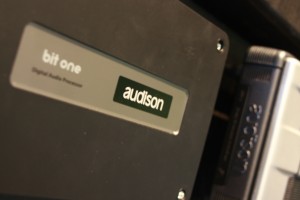
Looking for a high quality aftermarket car audio sound system while maintaining the factory appearance in your vehicle?
As car manufacturer’s design more and more complex vehicle interiors, it can become more difficult for integrating aftermarket stereo components to improve sound quality. It doesn’t have to be difficult though. Thanks to products like Audison’s Bit One, there are excellent options for integrating high fidelity audio components into an OEM system in a clean and seamless way.
In the past, it’s always been an option to upgrade speakers, add an amplifier or amplifiers along with a subwoofer to a stock system without changing the stock head unit. But this is kind of like taking 2 steps forward and one step back. You’ll always be limited to the sound quality and output of the stock stereo. Not only that, your only option for connecting these components this way are through speaker level connections, rather than RCA cables (which is the cleaner way to integrate amplifiers).
Most stock stereos are self attenuating. The manufacturer doesn’t want you to blow up the stock speakers, so internally they’ve engineered their stereos to adjust output as you crank the volume knob. This is not the case for every manufacturer, but it is especially true in most “premium” or amplified audio systems. You turn the volume up and may find that your bass and mid range levels seem to stay the same, but only treble and upper end frequencies are increased.
So the solution has always been to start with a good clean source, something with a high voltage pre-amp that will allow you to easily install an aftermarket amplifier, integrating with the pre-amp through clean, high quality RCA cables. Well, what if I told you, you could do better than that with going the OEM integration route.
First, let’s look at the traditional set up: replace head unit, replace speakers, add amplifiers and subwoofer. With this option, we have to wire up and install a new aftermarket head unit. Then, from the preamp of the new head unit, we need to run RCA cables to the location of the new amplifier. We also need to run power and ground wire for the aftermarket amplifiers as well as speaker wire from the aftermarket speakers to the aftermarket amplifiers. That’s a lot of wiring. Throughout this wiring it can be easy to pickup interference noise from things like the power wire, computers in the car or radio frequency interference emitted from the amplifiers themselves.
If we look at some of the more advanced audio systems coming from car manufacturer’s, you will see they only have one conversion and that is at the stock amplifier. Take a look, for example, at these 3 car manufacturers. Audi, BMW and Porsche. All of these manufacturers have platforms for many of their stereos that operate on the MOST bus system. MOST stands for Media Oriented Systems Transport. It’s a fiber optic network that communicates audio, video, voice and data signals to multiple components. This means there is one optical cable running from the head unit to the amp where it is then converted to analog. That’s it. No RCA’s, no speaker wire, no power wire, no chance for audio interference or audio degradation. From there it goes to speaker wire and then to the car stereo speakers.
Fiber optics in cars? You would think this would make it even more difficult to interface aftermarket car audio products. At first it was, but thanks to company’s like Mobridge, there are some pretty cool ways to add aftermarket amps and speakers that will make wiring this type of set up easier than a traditional aftermarket audio system. Mobridge makes a digital preamp for select MOST bus systems. The digital preamp allows you to remove the stock amplifier and connect an aftermarket amplifier. This preamp will the convert the fiber optic output to an analog RCA output, which can then go to aftermarket amplifiers and then, ultimately, aftermarket speakers. This means you can maintain your cars fiber optic system, maintain the stock head unit and appearance, but change the stock amp to a higher quality aftermarket amp that can then power higher quality aftermarket speakers. It’s an easy way to upgrade your audio system, but maintain the stock look. Since they’re very little wiring involved, it’s also just as easy to convert it back to original equipment.
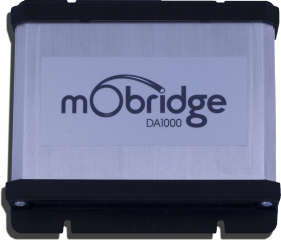
But wait, it gets even cooler. Throw in an Audison amplifier, like a new Voce series amp, and you gain a digital input at the amp. That means you can stay digital from the head unit to the amp. With fiber optic connections, you can eliminate the need for RCA cables which means you’ll have even cleaner sound quality and no chance of introducing any type of noise or interference into the audio system.
So that’s pretty awesome right? OEM look, aftermarket sound with minimal wiring required, but it gets even better. Hook it all up to an Audison Bit One with an optical toslink cable and you now have more control than most will know what to do with. The Bit One is an amazing piece of equipment all on its own, but using it in this type of setup means you’ll not only have a pure, clean and noise free signal, but you’ll have a completely customizable and correctable audio system.
The Bit One supplies car audio enthusiasts with an 8 channel output, a 31 band EQ per source, per channel, digital time alignment and a whole lot more. What will this do for you? Let’s say you have a stock 6 channel speaker system and you want a full audio upgrade in your BMW with a MOST system. After having your professional installer install your high quality aftermarket speakers, aftermarket amps, subwoofer, your digital preamp (if not using a Voce amp with digital in and out) and your Bit One, he’ll need to complete the Bit One tuning process.
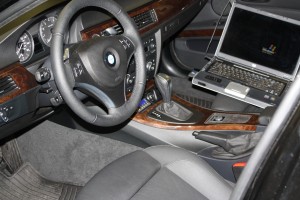
The Bit One will supply your installer with a USB connection to hook up to a lap top. It also comes with tuning software. The installer can then measure, from where your head sits in your car, the distance to each speaker in the car. Using the Bit One tuning software, he can then calibrate how much to delay each speaker by milliseconds so that each speaker hits your ears at exactly the same time. This process will completely center your sound stage right to where you’re sitting. When done correctly, you can’t pin point exactly where the sound is coming from; it envelops and surrounds you. This is especially helpful in bringing the subwoofer up (acoustically) to where you’re sitting in your car.
The 31 band EQ allows a knowledgeable installer to further correct and perfect your audio system. By playing pink noise (all frequencies) and measuring the frequency response with a real time analyzer (also known as an RTA) he can see with his eyes where there is too much of one frequency, too little of another, and adjust those frequencies accordingly to provide smooth and pleasing sound reproduction.
As car manufacturers improve and create more technologically advanced systems in their vehicles, you will see more innovative solutions in the aftermarket industry to utilize and integrate with these systems. It was originally thought by many in the mobile electronics industry that these types of changes in OEM operating systems would kill the car audio industry. It’s been quite the opposite. For those willing to learn about and embrace new technology, the possibilities for expansion in the industry become limitless.
What mobile electronic innovations have you been impressed with? What do you think has been the greatest innovation in car audio in the past 10 years? I’d love to hear your feedback. Thanks for reading and stay tuned for more innovations in the industry.

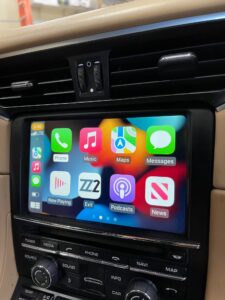
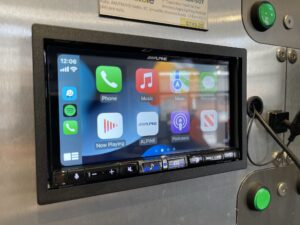
20 Comments
Annie-
Yet another MOSTly annoying question… I have a 2008 Boxster with the Bose seven speaker at the CDR-24 head unit. As the car is a convertible, I’m not obsessed with finding the perfect sound, but what is driving me nuts is the lack of an aux input or usb input.
My initial plan was to replace the Bose amp and factory head unit, but the installer said that pulling the factory parts alone was a $2500 job because of all the wires connecting the HU to the amp. I’m skeptical that it’s a 25 hour job at $100 an hour.
My dream is a clean and simple head unit with radio and a usb (or maybe Bluetooth) connection for iPhones and Androids. All it needs to do is integrate with a smartphone to play music and podcasts (charging would a bonus). But spending $3000 for the whole swap seems absurd.
Am I overlooking something? Is there an easy way to replace the stock head unit or add inputs without missing a house payment?
Thanks,
Scott
Hey Scott,
What we usually do in these cars is use the Nav TV dash kit and MOST bus amplifier retention module, but I’m not even sure you’ll need that. Usually those CDR-24 radios are non amplified and if it has the MOST bus connector behind the radio, it could just be for like an external CD changer. I’ve seen them with and without. But either way, NAV TV sells the dash kit (made in Germany) and MOST amplifier interface and can refer you to a competent installer in your area familiar with their parts. Even if you installed an aftermarket amp it is not a 25 hour job, perhaps he was including parts in that quote? I hope?
The Nav TV parts are not cheap, but the end result is something like this attached photo and all original equipment can easily be reinstalled should you ever want to sell the car and put it back to factory. We usually do a Pioneer Apple CarPlay/Android Auto compatible stereo. Out the door with parts, tax and install we’re just over $2000. That should give you a good idea. I hope that helps!
Thanks for the feedback. It’s been challenging to add this simple functionality bit of functionality without spending huge dollars. How do you feel about the Dension Gateway units, specifically the Gateway 500 for MOST bus systems? do you have any experience with those?
-Scott
Not a huge fan only because there isn’t a ton of customer support for it here in the US, I believe they are based in Hungary. We’ve installed a few, but if you have a tech support question and the US based distributor can’t help (AAMP of America aka Pac Audio) then you’re emailing back and forth and waiting for an answer due to the time zone difference.
Can this unit work on a 2005 bmw 745Li i really need to change my logic 7 amp
Hi Frank,
It looks like Mobridge only offers the digital pre-amp adapter for the 2009 7 series. After looking up the wire schematic for your car, I think I see why. It looks like the amp in the back of the vehicle only powers 1/2 of the speakers in your stereo system, while the “Audio Controller” (looks like another amp sized module from the diagram – assuming that’s part of the iDrive system up front) powers the other 1/2 of the speakers. So it’s not like the standard Logic 7 system I’ve seen in other BMW vehicles before where that amp powers everything.
If you need to replace the amp because it’s not working properly (like it’s corroded from moisture, seen that a few times) then I would suggest the OEM part. If you’re looking to upgrade the sound in the vehicle, I would suggest something like the Alpine PXAH800 processor. You will most likely need to sum the frequencies from both units into a processor and then go to aftermarket amps/speakers, but you would need to have the output from both units functioning in order to do that. I hope that helps!
Hi Annie,
I have been looking for solutions for my 2008 Aston Martin DB9. I want to remove the stock stuff and integrate a tablet into the dash, or maybe a parrot asteroid smart. All of this fiber optic stuff is messing me up though, I’ve never worked with it before. I know there is an Aston Martin upgrade that somewhat updates sat nav and bluetooth but it’s way over priced. I’ve also looked at the Dension gateway 500, but it doesn’t have bluetooth. I’ve looked at the streamblue from NavTV and all of these options are really only partial solutions with mediocre results. Thus the reason I’d like to just yank the stock stuff and put in something really cool. The stock speakers and amp are fine, it’s not a matter of sound quality, it’s a matter of having the latest gizmos.
Any suggestions would be much appreciated.
Patrick
Hi Patrick,
I wish I had more experience with this vehicle, but the the only thing I can recall doing in one of these vehicles is a radar detector. Mobridge has digital pre-amp stuff so you could upgrade the amp/speakers, but then you’re still stuck with the same dated technology. And unfortunately, that’s one vehicle I don’t have a wiring diagram for so I can’t really tell you exactly what you’re working with. You should probably try to buy a vehicle wire schematic before attempting anything.
What I can tell you about MOST bus systems and fiber optics is that the radio is basically part of the network. So you simply disconnect and take that radio out, you’re breaking the loop of communication and all of a sudden things don’t work in the vehicle. Depending on what vehicle functions go through your current stereo, you may be able to take the radio out, but you’ll need to complete the MOST bus circuit loop.
I imagine it would be similar to an install we did in a 3 series with Logic 7 a couple years ago. In that vehicle, we not only had to keep the stock amp in the car, but we had to relocate the stock stereo and keep that inline too (just for communication purposes only – without it we lost the vehicle warning chimes). So we relocated the radio to the trunk by extending the fiber optic connection from behind the stereo dash to the trunk. We had to keep the stock amp and stereo in line in the correct order in order to complete the fiber optic loop. Then we had to take the stock speaker wiring off the stock amp, go to an aftermarket amp and aftermarket speakers (for sound upgrade, technically you could probably re-use the stock speakers, but you’d have to add a crossover network for the stock component speakers because typically all factory crossovers are in the amp rather than external). And then you’d have to make a dash kit to house the new stereo in the factory radio dash. I wish I had more experience with the car to give you a better answer. I hope that gives you a better idea of what you’re working with!
I have this same question. I have a North American Spec 2007 LR3 se WITHOUT the Series 7 upgraded audio. What would i need to ‘kit out’ this truck without replacing head unit. If you swap out the stock radio for one of the alpine apple car screens (7″) and replace the amps and speakers, does that affect other vehicle functions?
thanks for your attention.
ben
Hi Ben,
I’ve worked on so few of these vehicles I really can’t tell you. I can only recall swapping the radio on one of these cars. It was a 2006 and they did lose some feature in the instrument cluster and I can’t even remember what it was now, I did the job like 3 years ago. I think it had something to do with speed sense. I don’t know if you have a digital read out of the speed (in addition to the regular speedometer), but I remember whatever the feature was, it was lost because speed sense was wired and communicated through the stock stereo, but when you change the stereo you break that chain of information. Same thing if you had any display for like what source you’re on in the instrument cluster, you’d lose that if it was equipped. There is a company that makes a physical dash kit – Connect2 dash kits.
Hi Annie – Wow, thanks for all the great info. I found your blog through the a link for the Cayenne system you did recently, but am most interested (pun intended) in his article about keeping the fiber optic cabling of the MOST system but upgrading the sound quality in my 08 Cayenne. I would like to replace the Bose amps and speakers with minimal wiring and without totally taking the vehicle apart. If I understand this article correctly, it’s possible to add a Mobridge digital preamp (converter?) and then replace the Bose amplifier with Audison amplifier with a digital input and then replace the Bose speakers without doing any (much) wiring? And then add the Audison Bit One for equalization?? Have you done a Cayenne like this? Can you describe the specific products(s) and process of how this would work? I might be up for road trip to your shop to make it happen! Thanks a lot.
Hi Paul, sorry for the late response, was busy trying to survive the holiday shopping season at our shop the past couple months. I have done that style system in a BMW I had although these days I wouldn’t recommend the Audison processor. I ended up having a lot of issues with them and their service center had my own personal Bit One for over a year so we moved on to the Alpine PXAH800 which has proven to be a rock solid processor. I’m not sure how Audison is at this time however. Quite honestly, the whole thing just left a bad taste in my mouth.
In the BMW I had, we used the Mobridge pre-amp and that was one of my favorite systems because it was so clean in sound quality, yet 100% stock appearance and it was a leased vehicle. When the lease was up all the OEM equipment went back in easily. So I’m not opposed to the concept at all, but I don’t know how I’d feel about keeping the outdated 2008 head unit. As long as it has the features you need for a radio, that’s not a bad way to approach the system. Mobridge even has a more basic preamp so you could even just go to a basic 5 channel amp and skip the processor all together. Just depends on how fine tuned you want it.
You would definitely want to go to a Mobridge dealer that is familiar with their products. You’d be looking at either their MOST Digital TOSLINK Pre-Amp or their MOST Analog Pre-Amp. I have not tried their other Pre-Amp products so couldn’t really comment on them.
Hey Annie,
I would first like to thank you for all your in depth & awesome car audio information that you take your time to share with us. I have gone through several of your reads & subscribed to your YouT channel. I just randomly stumbled upon your blog when looking up info on installing an aftermarket amplifier & have been hooked ever since 🙂
Recently, I got a 15 Toyota Camry (Non-JBL) & was very unhappy w/ the stock audio. I initial swapped out all 6 speakers (the dash & front doors are wired in parallel) & found the audio was still lacking. Upon further research, I discovered that most OEM HU (head unit) have low RMS power & thus most likely my speakers weren’t receiving proper power. Thus, added a 4-Channel Alpine MRV-F300 amplifier & tuned it using a DD-1 while playing a 1Khz tone & the speakers came to LIFE!
But there was a new problem. I quickly discovered a “hissing” sound in the background that was independent of my volume control. It only increased or decreased w/ the amp gain level — and was there even when the engine was off. Upon going through several Toyota forums threads, I found from other owners that the Entune stock HU is the source of the sound & the stock crappy speakers do a great job of hiding it. But upon amplifying the signal, it can be easily detected. Hence, I decided to swap out my OEM HU for a Pioneer AVH-X4700BS and the sound was gone & the speakers sounded even better! Also, I found the TA (time alignment), crossover & EQ features to be phenomenal. I made sure to use the ASWC-1 module to retain some of my steering wheel controls.
So here is my new dilema. Call my weird (haha) but I kinda want to go back to the stock look. Although my car system sounds awesome now, I miss some of the functionality of my OEM HU such as a graphical display of my mpg & lighting and other vehicle customizations I can do. But of course I know if I do this, I will experience the hissing noise again.
But I have visited some other forums — such as this thread –> http://bit.ly/1HsyleE — were Toyota owners w/ the Entune HU who wished to keep their stock HU added a Bit Ten btw the OEM HU & aftermarket amplifier & were able to get the noise tuned out. Thus, I wanted to get your opinion on this.
Do you think this is a viable route? I am considering swapping my Pioneer back to OEM but this time adding a Bit Ten and paying my local car audio installer to tune it for me as the software looks above my pay grade 🙂
Also, I wanted to know if I HAVE to use the DRC w/ the Bit Ten as having a 3rd-party control knob is a deal breaker for me. I would prefer to use my steering wheel control. To my understanding, the Toyota Entune HU rolls off the bass above 25/62 volume. Thus, if I tune the DSP at 75% volume, I should be good right?
I look forward to your response
Hi Frank, thank you for the comments and your question – sorry I have been to busy to answer in recent months. Personally I’ve gone away from Audison, they had my own personal Bit One in service for over a year and yeah I’ve used their DRC’s and actually had quite a few defective ones. They may be a lot better at this point in time but we’ve using the Alpine processor the PXAH800 and have been very happy with it, more so than the Bit One. Additionally JL Audio just came out with a new processor called the FiX82 which appears to be promising. I’ll know about that in a few weeks, we’ll be installing our 1st one in a brand new Challenger Hellcat. The JL Audio processor is probably more up your ally for a do-it-yourselfer, so if you want, check back with me in a few weeks and I’ll let you know how it turned out.
And yeah we typically measure the output from the stock head unit before we do these types of installs because every car is different so depending on what the stock head unit is doing for output you may need to tune at a specific volume on the stock head unit and use the remote for volume.
This is a common question among LR3 owners 2005-Up. The OEM head unit (which is terrible) has a M.O.S.T output to the stock Harmon Kardon amp. Based on my research if you replace the HU you have to replace the OEM amp and re-wire to the new amp.
Is there no adapter to go between the aftermarket head unit and the M.O.S.T connection? This would be a much simpler option since I don’t want to replace anything but the head unit.
Hey Gene,
Not that I’ve seen for the LR3. Nav TV has options for some MOST bus vehicles, but nothing for this vehicle as of yet. They have a few things for the LR3, but all for integrating with the existing factory head unit. Mobridge is the same thing. They have a digital pre-amp which allows you to keep the stock head unit and install aftermarket amps and speakers and/or processor, but nothing to adapt the other way around. I’m sure one of them will get there sooner or later because eventually these vehicles will need to be updated and there will be a good market for it. I kind of think there already is a good market for it, but these things take time to develop and get out there.
Is there any solutions for changing the Original ( most) headunit with a afetrmarket?
That would be even more awesome. In this case for a Land rover Discovery 3 / LR3
What year? I just researched this for someone recently.
What’s the different compared with JBL MS8? a friend of mine installed the ms8 in his car and the sound quality is awesome.
Hi Marc,
This is a little tough for me to answer without sounding like a jerk, so I apologize now if I sound completely rude and obnoxious.
No offense to you or your friend as I have personally not heard or used the MS8 and that has to do with previous experiences I’ve had with JBL. In all other experiences with JBL I have not been impressed with their sound quality ability – more so their marketing ability. We have a nickname for them in our industry. In the install bay you will commonly hear JBL referred to as “Junk but loud”. It’s unfortunate that earlier experiences with their speakers, amps and subs have really tarnished my view on their product. I kind of cringe when people talk about the MS8 because I recall all my other experiences with their product. I think that’s normal for any consumer who has had consistently bad experiences with particular manufacturers.
On paper it sounds fantastic and I would be happy to try one of their MS8’s if JBL would like to supply a sample and prove me wrong and turn me into a true JBL supporter. But as a mobile electronics specialist, at this point in my experience, I would rather use Audison Bit One, JL Audio Clean Sweep or any OEM integration product by Audio Control.
It may be TOTALLY awesome, but I’m not shelling out $800 to try it and see. JBL will have to convince me on that one (which by the way, it’s not uncommon for manufacturers to provide samples that are tried, tested and then either bought or returned if unsatisfied).
To get an unbiased opinion I would try to find a JBL dealer who is also an Audison dealer or Audio Control dealer and have experience with the various processors made by each company.